Breadcrumb
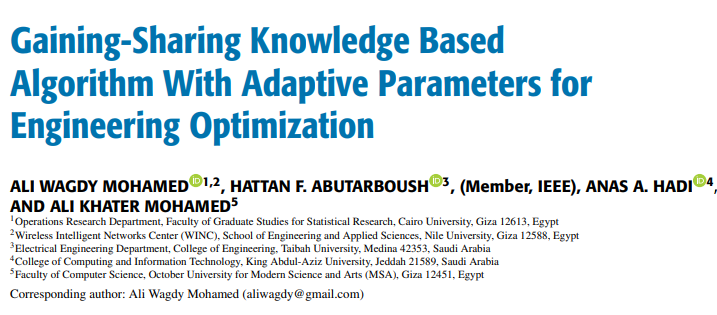
Gaining-Sharing Knowledge Based Algorithm with Adaptive Parameters for Engineering Optimization
As optimization algorithms have a great power to solve nonlinear, complex, and hard optimization problems, nature-inspired algorithms have been applied extensively in distinct fields in order to solve real life optimization cases. In this paper, modifications for the recently proposed Gaining-Sharing-Knowledge based algorithm (GSK) are presented for enhancing its performance. Gaining-Sharing-Knowledge algorithm is considered as a perfect example of modern nature-inspired algorithm that considered the human life behavior as a source of inspiration in order to solve optimization problems. GSK
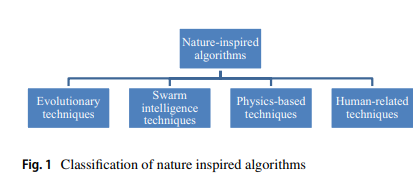
Gaining-sharing knowledge based algorithm for solving optimization problems: a novel nature-inspired algorithm
This paper proposes a novel nature-inspired algorithm called Gaining Sharing Knowledge based Algorithm (GSK) for solving optimization problems over continuous space. The GSK algorithm mimics the process of gaining and sharing knowledge during the human life span. It is based on two vital stages, junior gaining and sharing phase and senior gaining and sharing phase. The present work mathematically models these two phases to achieve the process of optimization. In order to verify and analyze the performance of GSK, numerical experiments on a set of 30 test problems from the CEC2017 benchmark for

On Caching and Base Station Densification Tradeoff for Maximized Energy Efficiency
In this paper, we study a two-tier cellular network with cache-enabled small base stations (SBSs). In our model, a SBS has the ability to coordinate with neighboring SBSs and fetch data from their caches. We focus on the effect of SBSs' density on the network's energy efficiency. To this end, stochastic geometry theory is used to model the SBSs and users distributions, which enables us to find closed-form expressions for the network's energy efficiency as a function of the SBSs density and the cache size at each SBS. The optimal SBSs density that maximizes the energy efficiency is

Proactive power allocation and caching node selection for regular service guarantees
This paper studies the potential of proactive resource allocation to prolong the communication sessions in networks with limited energy budgets and stringent quality-of-service (QoS) requirement, particularly a regular service guarantee. A threshold-based proactive communication policy is proposed to minimize the consumed transmission energy and maximize the network lifetime based on the different link states and the buffer state at the destination node. A closed-form expression is presented for the proactive gain in terms of the channel gain threshold, the amount of the proactively-
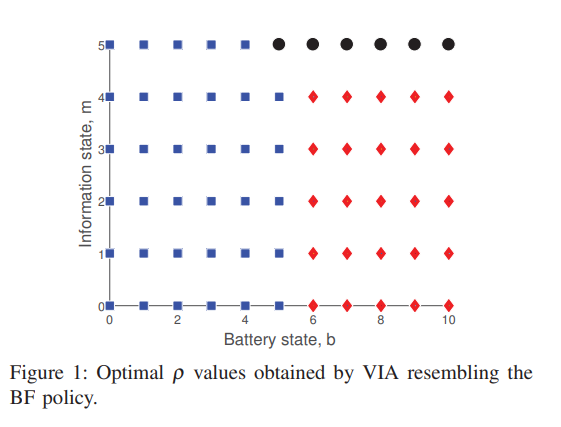
Wireless energy and information transfer in networks with hybrid ARQ
In this paper, we consider a class of wireless powered communication devices using hybrid automatic repeat request (HARQ) protocol to ensure reliable communications. In particular, we analyze the trade-off between accumulating mutual information and harvesting RF energy at the receiver of a point-to-point link over a time-varying independent and identically distributed (i.i.d.) channel. The transmitter is assumed to have a constant energy source while the receiver relies, solely, on the RF energy harvested from the received signal. At each time slot, the incoming RF signal is split between
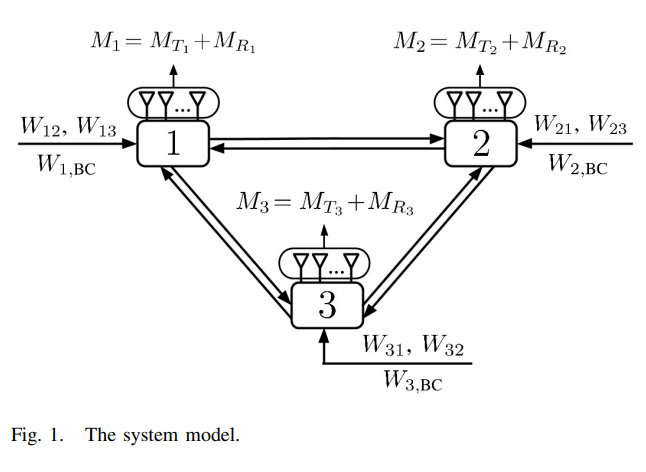
Degrees of Freedom of the Full-Duplex Asymmetric MIMO Three-Way Channel with Unicast and Broadcast Messages
In this paper, we characterize the total degrees of freedom (DoFs) of the full-duplex asymmetric multiple-input multiple- output (MIMO) three-way channel. Each node has a separate-antenna full-duplex MIMO transceiver with a different number of antennas, where each antenna can be configured for either signal transmission or reception. We study this system under two message configurations; the first configuration is when each node has two unicast messages to be delivered to the two other nodes, while the second configuration is when each node has two unicast messages as well as one broadcast

Degrees of freedom in cached MIMO relay networks with multiple base stations
The ability of physical layer relay caching to increase the degrees of freedom (DoF) of a single cell was recently illustrated. In this paper, we extend this result to the case of multiple cells in which a caching relay is shared among multiple non-cooperative base stations (BSs). In particular, we show that a large DoF gain can be achieved by exploiting the benefits of having a shared relay that cooperates with the BSs. We first propose a cache-assisted relaying protocol that improves the cooperation opportunity between the BSs and the relay. Next, we consider the cache content placement
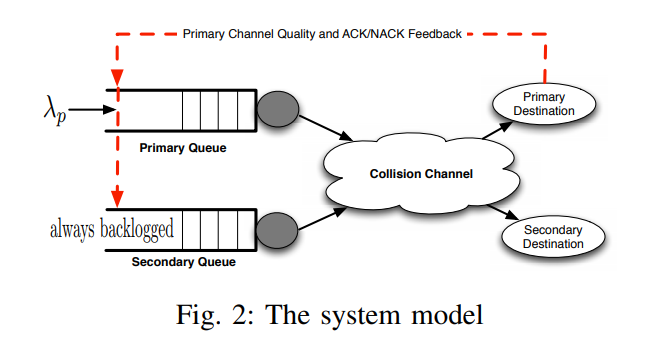
Hybrid feedback-based access scheme for cognitive radio systems
In this paper, a cognitive radio system is studied in which the secondary user (SU) leverages the primary user (PU) channel quality indicator feedback (CQI) and the PU automatic repeat request (ARQ). The SU randomly accesses the PU channel with access probabilities based on its spectrum sensing outcome and the PU feedbacks. The SU's access probabilities are selected though an optimization problem with the objective to maximize the SU's throughput while ensuring the stability of the PU's packet queue. This system is modeled using a multidimensional Markov chain. This model enabled us to derive

LTE dynamic scheduling scheme for massive M2M and H2H communication
Machine-to-Machine (M2M) has become a generally used term owing to the concept of the Internet of Things (IOT). M2M communications have numerous areas of implementation such as medicine, transportation, environmental monitoring, and smart grids. As the field of its implementation extends, the number of M2M equipment are projected to grow proportionally in the upcoming few years. Current cellular network technologies will not be able to cope with the expected increase in the number of M2M services while considering QoS as a major topic. Many applications of M2M are delay sensitive that will
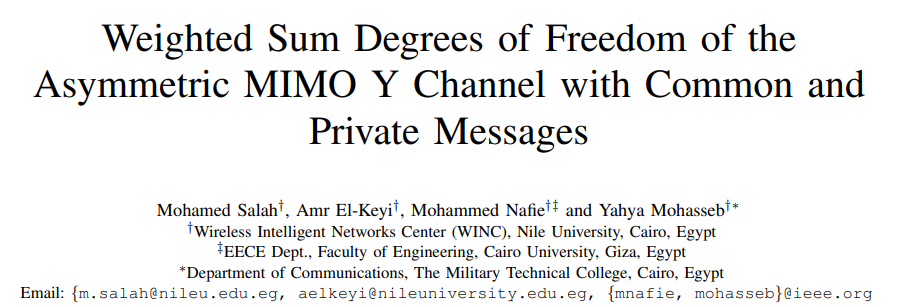
Weighted sum degrees of freedom of the asymmetric MIMO y channel with common and private messages
This paper investigates the weighted sum degrees of freedom (DoF) of the MIMO Y channel that consists of three users, where the j-Th user is equipped with Mj antennas, and a relay equipped with N antennas. In this network, each user conveys two private messages to the other two users in addition to a common message directed to both of them. As there is no direct link between the users, communication occurs through the relay. We define a weighted sum DoF metric that integrates all the network messages and weights the common message by a factor of α. Then, we study the weighted sum DoF
Pagination
- Previous page ‹‹
- Page 26
- Next page ››
